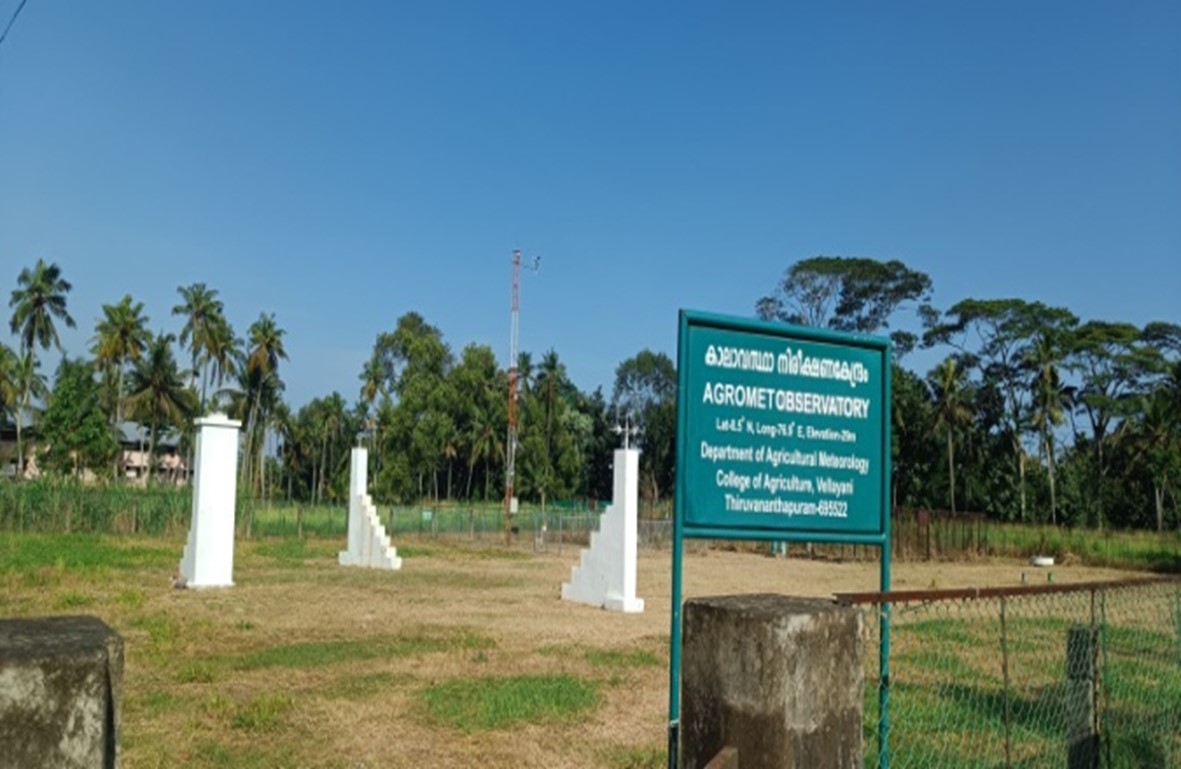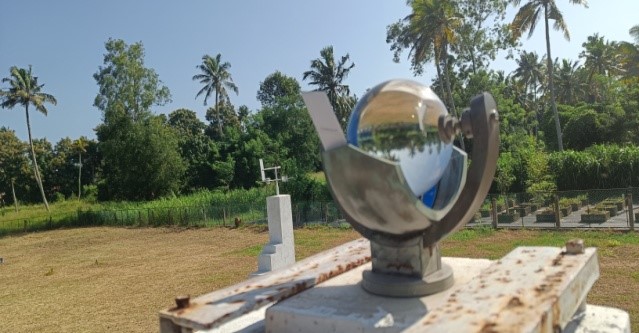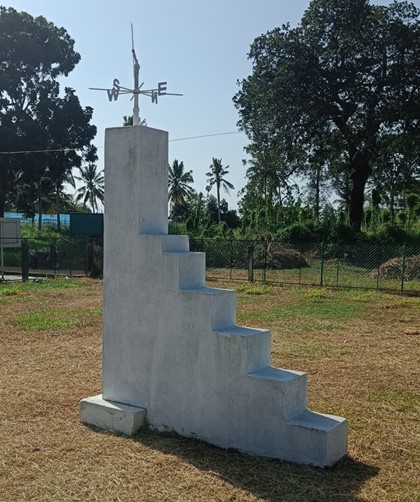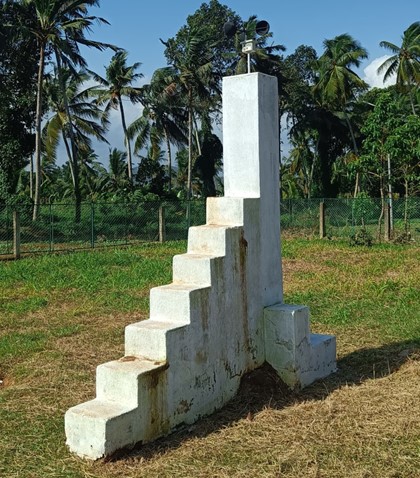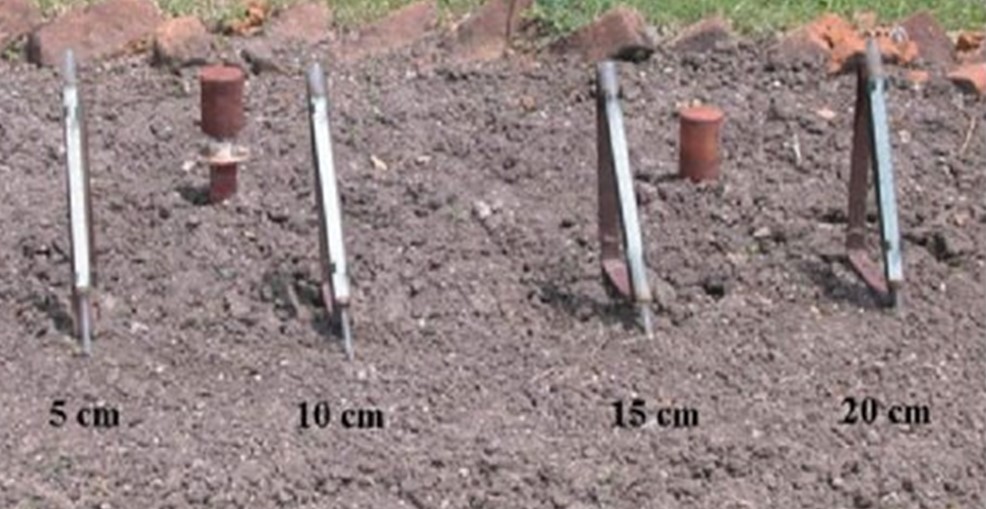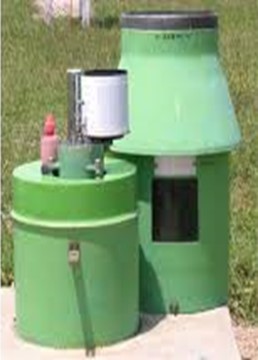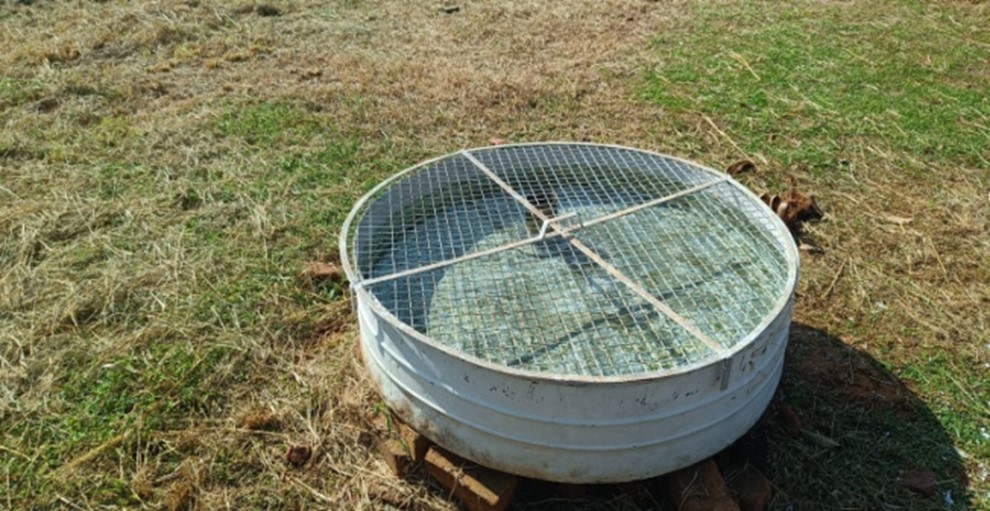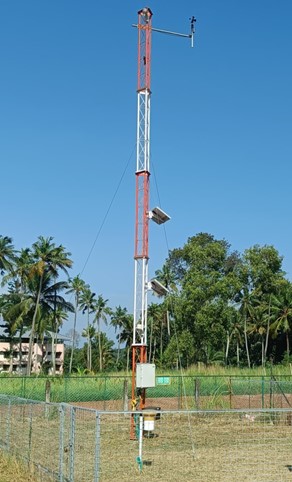Facilities
Agromet observatory and Automatic weather station
The Department of Agricultural Meteorology maintains a Class B Agrometeorological Observatory spanning 55 meters (North–South) by 36 meters (East–West), equipped to support weather monitoring and agricultural research. The observatory houses a range of instruments including a sunshine recorder, Single Stevenson Screen, wind vane, cup anemometer, ordinary and automatic rain gauges, soil thermometers, open pan evaporimeter and an automatic weather station. Observations are systematically recorded daily at 7:22 AM, 8:30 AM, and 2:22 PM, following IMD protocols. With historical weather data archived since 1983, the observatory serves as a vital resource for long-term climate analysis, crop-weather modeling, agro-advisory services, and regional resilience planning—contributing significantly to climate-smart agriculture initiatives in Kerala.
Sunshine recorder
The instrument which is used to measure the total bright sunshine hours received in a day is the sunshine recorder. This device consists of a solid glass sphere approximately 10 cm in diameter, mounted concentrically within a hemispherical bowl that features three distinct grooves for holding chemically treated sunshine cards. These cards—long curved, short curved and straight—are seasonally adjusted to capture the sun’s apparent motion. As sunlight passes through the glass sphere, it is focused onto the card, burning a trace that corresponds to the duration of bright sunshine. The bowl is marked with latitudinal guides ranging from 10° to 35°, ensuring proper alignment based on geographic location. To ensure accurate readings, the sunshine recorder is installed on a 10-foot pillar within the observatory, positioned with precise adjustments for concentricity, latitude, meridian and level.
Wind Vane
The wind direction is recorded using wind vane. It is a balanced lever which turns freely about a vertical axis. Like an arrow, one end of the lever has pointed narrow shape while the other end is like a flat plate with broad surface area. The narrow end points to the direction from which wind is blowing.
Cup anemometer
Wind speed is measured using a cup anemometer, typically installed at a standard height of 10 feet above ground level over open, level terrain to ensure accurate exposure. The instrument features three large semi-conical cups with beaded edges, each fixed to the end of a horizontal rod and symmetrically arranged around a vertical axis. When wind strikes the concave side of the cups, it exerts more force than on the convex side, causing the entire assembly to rotate. To determine the mean wind speed over a specific period, the counter readings are taken at the start and end of the interval. The difference between these readings is then divided by the time duration in minutes, yielding the average wind speed for that observation period.
Single Stevensen screen
Four different types of thermometers viz., the maximum, minimum, dry bulb and wet bulb thermometers are housed in single Stevenson screen. The essential conditions for the exposure of thermometers are that air should have free access to the bulbs of thermometers and neither the sun rays nor rain should fall on them. Stevenson’s screen is a rectangular box with its sides and door double louvered and with a double layered roof with air space in between. The door opens to the north (in Northern Hemisphere) and the bulbs of the wet and dry bulb thermometers are placed at 1.2 meters above the ground.
Soil thermometers
Soil thermometer is mercury in glass thermometer with a bend of 120 degrees in the stem just above the bulb, used to record soil temperature. The thermometer has a range from – 5 oC to + 70 °C and can be read to an accuracy of 0.l °C. It is installed with a triangular iron stand bent at 60 degrees so that the thermometer when mounted, makes an inclination of 120o with the ground. Soil thermometers at different depths (0, 5, 10, 20 and 30 cm) are installed along a line running east-west at a distance of 60 cm from the southern side.
Rain gauge
Rainfall accumulated over a 24-hour period is recorded using a rain gauge. At the observatory, FRP (Fibre Glass Reinforced Polyester) rain gauges are installed to monitor and measure the total daily rainfall.
Ordinary rain gauge
The essential parts of ordinary rain gauge are – a collector with a metal rim of circular shape (200 sq. cm area), a base, polythene bottle and a measuring glass. Both the collector and the base are made of fibre glass reinforced polyster. The rim of the rain gauge is exactly horizontal and remained at a height of 30 cm above ground level. To measure the rainfall, remove the funnel/collector of the rain guage and take out the polythene bottle. Place the measuring glass in an empty basin and slowly pour the content of the receiver into the glass taking care to avoid spilling. Read the amount of rain in the measuring glass.
Self -recording rain gauge (S.R.R.G.)
It gives a continuous record of the rainfall. The rain water entering the gauge at top of the cover is led via the funnel to receiver, consisting of a float chamber and siphon chamber. The pen is mounted on stem of the float and as the water level rises in receiver the float rises and the pen records on a chart placed on a clock drum. The clock drum revolves once in 24 hours so that a continuous record of the movement of the pen is made on chart. Automatic siphoning occurs when the pen reaches top of the chart and as the rain continues, the pen rises again from zero line of the chart. If there is no rain the pen traces a horizontal line from where it leaves off rising. The SRRG is installed with rim of funnel placed horizontally at a height, exactly 75 cm above ground level.
Class A Open pan evaporimeter
The instrument measures the total amount of water lost by evaporation during 24 hours. This consists of a large circular pan (diameter 122 cm) with stilling well to provide an undisturbed water surface around the point of a hook gauge by breaking any ripple caused by wind. The pan rests over a white painted wooden stand. The pan is covered with wire-netting. A thermometer to measure the surface temperature of water is fixed with the bulb just dips in water.
The amount of water lost by evaporation from pan during any interval of time is measured by adding known quantities of water to the pan from a graduated cylinder till the water level touches the reference point. The amount of water added equals the amount of water lost by evaporation from the pan and this divided by the time interval, gives the rate of evaporation. Rain falling into the pan is accounted for by assuming that the catch of a nearby rain gauge represents the added depth of water due to the rain. The readings are taken at 0830 and 1430 hours IST.
Soil moisture observation
Soil moisture (SM) is measured by gravimetric method using soil sample at different depths including surface, 5 cm, 10 cm, 15 cm, 20 cm, 45 cm and 60 cm twice weekly. Soil is dried at 1050C for 24 hours until a constant weight is reached.
Automatic weather station
An automatic weather station (AWS) is an automated version of the traditional weather stations which helps to save human labour and also enables measurements from remote areas. Automatic weather stations have thermometer for measuring temperature, anemometer for measuring wind speed, hygrometer for measuring humidity and barometer for measuring pressure, rain gauge for measuring rainfall. It also consists of a weather proof enclosure containing the data logger and rechargeable battery, meteorological sensors, solar panel or wind turbine and a mast.
